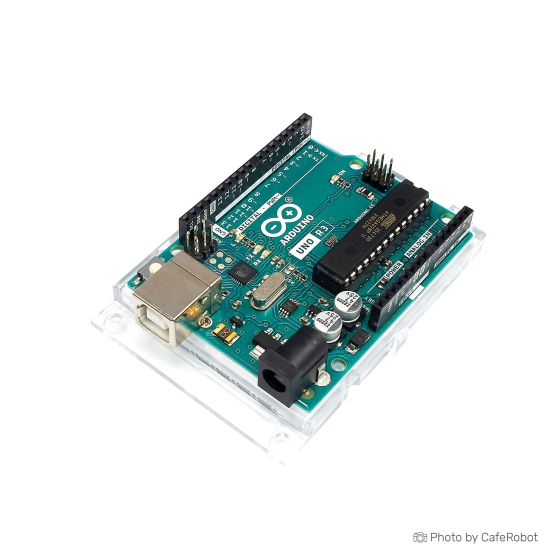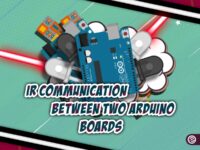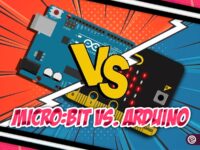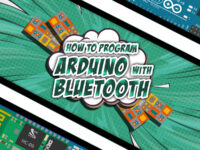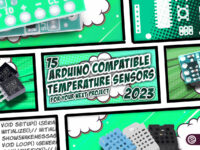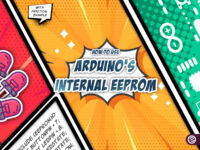برد آردوینو UNO R3 اورجینال
برد Arduino UNO R3 یک پلتفرم میکروکنترلر متنباز بر پایه ATmega328P است که برای پروتوتایپسازی و ایجاد پروژههای الکترونیکی تعاملی طراحی شده است. این برد با دارا بودن 14 پین ورودی و خروجی دیجیتال (6 پین برای PWM)، 6 ورودی آنالوگ، و اتصالات مختلف به کاربران امکان توسعه و آزمایش انواع پروژهها را میدهد. استفاده از برد آردوینو UNO برای مبتدیان و حرفهایها به دلیل سادگی در راهاندازی و قابلیتهای گسترده بسیار مناسب است.
مشخصات فنی برد Arduino UNO R3
- میکروکنترلر: ATmega328P
- ولتاژ عملیاتی: 5 ولت
- ولتاژ ورودی (پیشنهادی): 7-12 ولت
- ولتاژ ورودی (محدوده): 6-20 ولت
- پینهای دیجیتال I/O: 14 (6 پین PWM)
- پینهای ورودی آنالوگ: 6
- جریان DC هر پین I/O: 20 میلیآمپر
- حافظه فلش: 32 کیلوبایت (0.5 کیلوبایت برای بوتلودر)
- SRAM: 2 کیلوبایت
- EEPROM: 1 کیلوبایت
- سرعت ساعت: 16 مگاهرتز
- ابعاد: 80x60x25 میلیمتر
تفاوتهای برد آردوینو UNO R3 اورجینال و کپیهای چینی
- کیفیت ساخت: بردهای اورجینال معمولاً دارای کیفیت ساخت بالاتری هستند، از جمله در کیفیت قطعات و لحیمکاری.
- قیمت: بردهای اورجینال اغلب گرانتر از نسخههای کپی هستند، اما نسخههای کپی به دلیل قیمت پایینتر برای کاربران با بودجه محدود جذابتر هستند.
- اصالت تولید: بردهای اورجینال در ایتالیا و مکانهای مجاز تولید میشوند، در حالی که نسخههای کپی معمولاً در چین تولید میشوند.
نحوه استفاده از Arduino UNO R3
- نصب نرمافزار Arduino IDE: ابتدا نرمافزار را از وبسایت رسمی Arduino دانلود و نصب کنید.
- اتصال آردوینو به کامپیوتر: با استفاده از کابل USB، برد را به کامپیوتر وصل کنید.
- تنظیمات نرمافزار Arduino IDE: برد و پورت مناسب را انتخاب کنید.
- نوشتن و آپلود کد: کدهای خود را بنویسید و از طریق نرمافزار به برد آپلود کنید.
برد Arduino UNO R3 به دلیل امکانات و مستندات گسترده، یکی از پرکاربردترین بردهای آردوینو محسوب میشود و انتخابی عالی برای شروع کار با الکترونیک و توسعه پروژههای تعاملی است.
The Arduino UNO R3 is a widely used open-source microcontroller board that is part of the Arduino hardware platform. It is designed for ease of use in prototyping and creating interactive electronic projects. Developed by the Arduino Company, the UNO R3 board is based on the ATmega328P microcontroller.
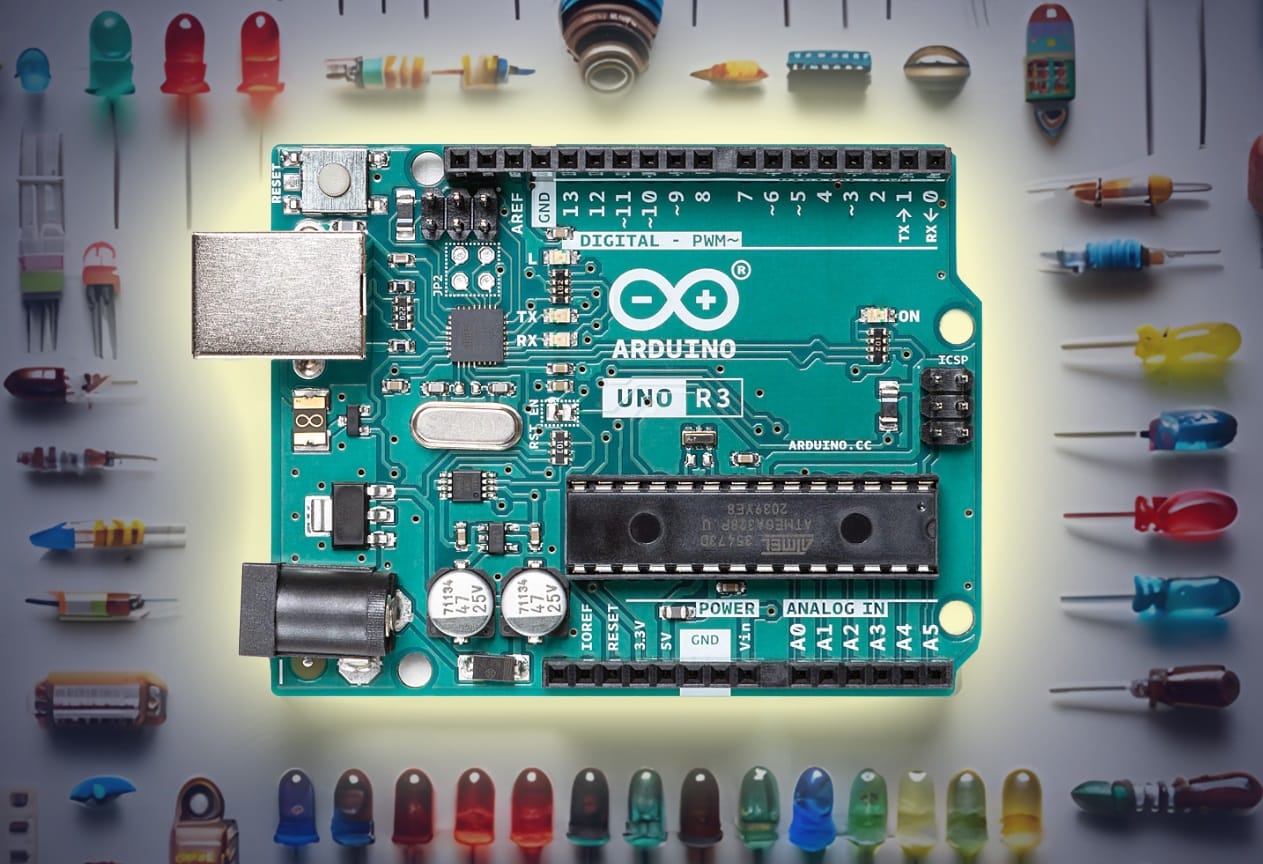
It’s an 8-bit microcontroller with 32KB of Flash memory and 2KB of RAM. It has 14 digital input/output pins (of which 6 can be used as PWM outputs), 6 analog inputs, a 16 MHz crystal oscillator, a USB connection, a power jack, an ICSP header, and a reset button.
It contains everything needed to support the microcontroller; simply connect it to a computer with a USB cable or power it with an AC-to-DC adapter or battery to get started. The UNO R3 board is the first in a series of USB boards and it is the reference model for the Arduino platform.
Arduino UNO R3 is the ideal board for getting started with electronics, through fun and engaging hands-on projects. This board is your entry to the unique Arduino experience: great for learning the basics of how sensors and actuators work, and an essential tool for your rapid prototyping needs. Arduino Uno Rev3 is the most used and documented board in the Arduino family.
Features of Arduino UNO R3
- Dimensions : 80mm x 60mm x 25mm
- Microcontroller : ATmega328P
- Operating Voltage : 5V
- Input Voltage (recommended) : 7-12V
- Input Voltage (limit) : 6-20V
- Digital I/O Pins : 14 (of which 6 provide PWM output)
- PWM Digital I/O Pins : 6
- Analog Input Pins : 6
- DC Current per I/O Pin : 20 mA
- DC Current for 3.3V Pin : 50 mA
- Flash Memory : 32 KB (ATmega328P) of which 0.5 KB used by bootloader
- SRAM : 2 KB (ATmega328P)
- EEPROM : 1 KB (ATmega328P)
- Clock Speed : 16 MHz
- LED_BUILTIN : 13
What projects should I not use Arduino UNO R3 for?
While the Arduino UNO R3 is a versatile and widely used microcontroller board, there are certain types of projects for which it may not be the most suitable choice. Here are some scenarios where other microcontrollers or development platforms might be more appropriate:
- High-Performance Computing: f your project requires substantial computational power, such as complex mathematical calculations, intensive signal processing, or running resource-demanding algorithms, you might want to consider microcontrollers or development boards with more powerful processors, such as those based on ARM Cortex-M or Cortex-A architectures.
- High-Frequency Signal Processing: Arduino UNO R3, like many microcontrollers in its class, might not be suitable for projects requiring high-frequency signal processing or real-time control in the range of tens of megahertz or higher. In such cases, specialized platforms with dedicated signal processing capabilities may be more appropriate.
- Graphics and Multimedia Applications: Projects involving graphics, multimedia, or advanced display requirements may benefit from microcontrollers with dedicated graphics processing units (GPUs) or platforms specifically designed for multimedia applications.
- Large-Scale Data Processing: If your project involves handling large datasets or performing extensive data processing, you might consider platforms with more memory and processing power, such as single-board computers (SBCs) or more advanced microcontrollers.
- Professional Embedded Systems: For commercial or industrial applications that demand more robustness, reliability, and certification, professional-grade microcontrollers or embedded systems designed for specific industries may be preferable over hobbyist platforms like Arduino UNO R3.
- Battery-Powered Projects with Stringent Power Constraints: If your project requires ultra-low power consumption and long battery life, there are microcontrollers specifically designed for low-power applications. Arduino UNO R3, with its onboard components and power regulation, may not be the most power-efficient choice for battery-powered projects with stringent power constraints.
- Real-Time Operating System (RTOS) Applications: f your project requires a real-time operating system for precise timing or multitasking, there are microcontrollers and platforms specifically designed for running RTOS, which might be more appropriate than the Arduino UNO R3.
Pinout of Arduino UNO R3
The Arduino UNO R3 board has various pins, including digital input/output pins, analog input pins, power pins, and communication pins. Here's a breakdown of the pins on an Arduino UNO R3:
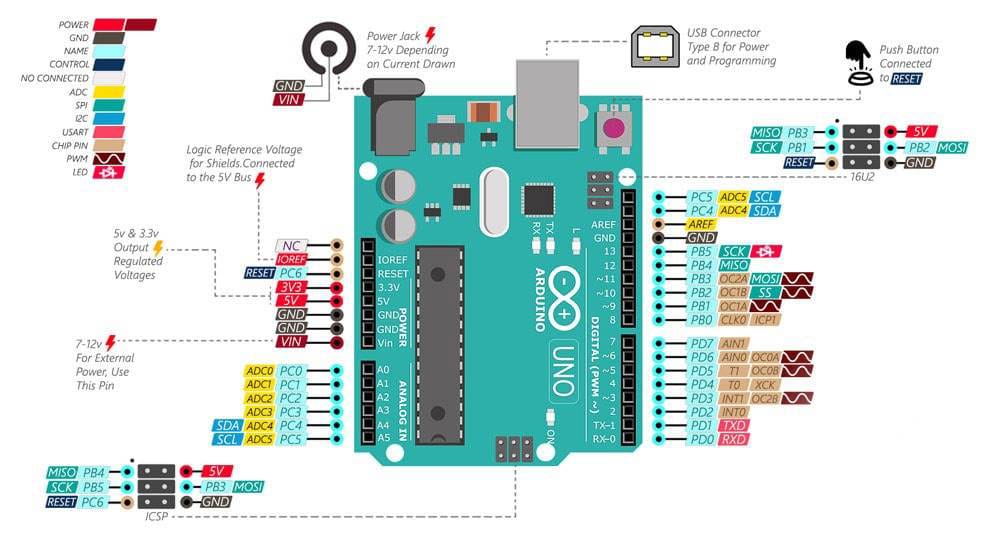
There are totally 20 I/O pins. Which 14 of them are digital I/O and 6 of them are Analog Inputs.
- Digital I/O Pins (D0-D13): Pins D0 to D13 are digital input/output pins. They can be used for both digital input (reading HIGH or LOW) and digital output (providing HIGH or LOW).
- Analog Input Pins (A0-A5): Pins A0 to A5 are analog input pins. They can be used to read analog signals from sensors or other devices.
- 5V: Provides a regulated 5V power output.
- 3V: Provides a regulated 3.3V power output.
- GND (Ground): Ground pins for connecting to the ground of the circuit.
- PWM (Pulse Width Modulation) Pins: Pins D3, D5, D6, D9, D10, and D11 support PWM, allowing for analog-like output using pulse-width modulation.
Below figure, you can see Arduino UNO R3 general pinouts.
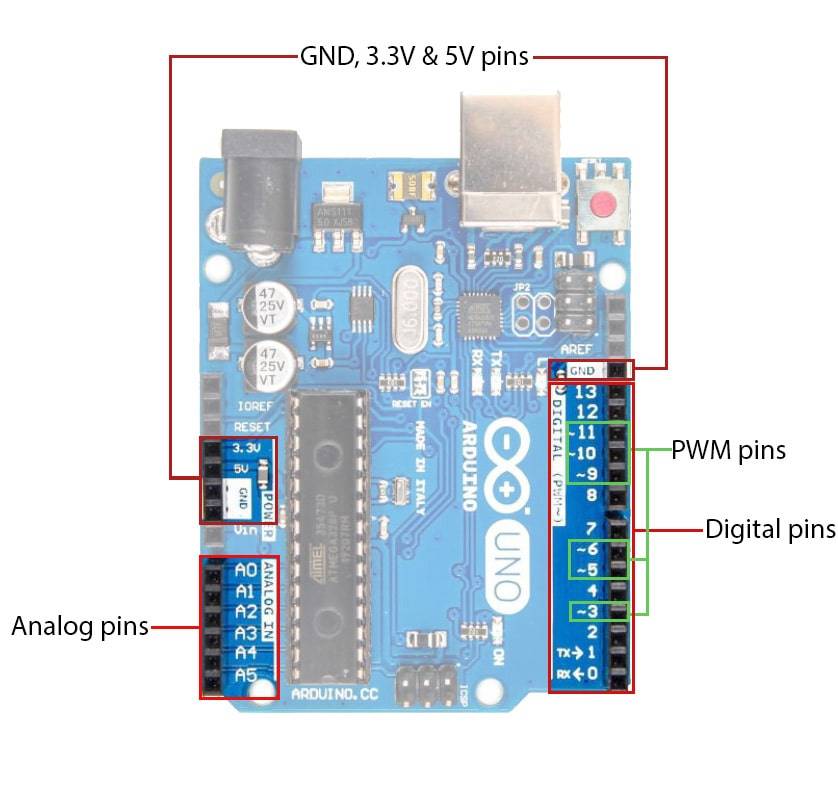
Communication interfaces of Arduino UNO R3
The Arduino UNO R3 board supports several communication interfaces, allowing it to interact with other devices and components. Here are the main communication interfaces of the Arduino UNO R3:
- Serial Communication (UART): RX (D0) and TX (D1): These pins are used for serial communication. The Arduino UNO R3 can communicate with other devices, such as computers or other microcontrollers, using the Universal Asynchronous Receiver-Transmitter (UART) protocol.
- I2C (Inter-Integrated Circuit): SDA (A4) and SCL (A5): The Arduino UNO R3 supports I2C communication, a two-wire serial communication protocol. It allows multiple devices to communicate over a shared bus.
- SPI (Serial Peripheral Interface): MISO (D12), MOSI (D11), SCK (D13), and SS (D10): These pins are used for SPI communication, a synchronous serial communication protocol commonly used for interfacing with sensors, displays, and other devices.
- Analog-to-Digital Converter (ADC): A0 to A5: These pins can be used for analog input. The Arduino UNO R3 has a built-in ADC, allowing it to convert analog signals from sensors or other devices into digital values.
- PWM (Pulse Width Modulation): D3, D5, D6, D9, D10, D11: These pins support PWM, allowing the Arduino UNO R3 to simulate analog output by varying the duty cycle of a digital signal. PWM is often used for controlling the brightness of LEDs or the speed of motors.
- External Interrupts: D2 (interrupt 0) and D3 (interrupt 1): These pins can be used for external interrupts, allowing the Arduino UNO R3 to respond to external events, such as a button press or a change in a sensor's state.
Arduino UNO R3 Memory
The Arduino UNO R3 microcontroller board doesn't have extensive storage capabilities like a full-fledged computer. Instead, it relies on its built-in flash memory for program storage and uses external sources for data storage. Here are the key aspects of storage on the Arduino UNO R3:
- Flash Memory: The Arduino UNO R3 is equipped with 32 kilobytes (KB) of Flash memory. This is where your Arduino program (sketch) is stored. It includes the code that you write in the Arduino IDE and upload to the board.
- EEPROM (Electrically Erasable Programmable Read-Only Memory): The Arduino UNO R3 also has 1 kilobyte (KB) of EEPROM. EEPROM is a non-volatile memory, meaning it retains data even when power is removed. This memory can be used to store data that needs to be preserved between power cycles, such as settings or calibration values.
- SRAM (Static Random-Access Memory): The Arduino UNO R3 has 2 kilobytes (KB) of SRAM, which is used for runtime storage during program execution. SRAM is volatile memory, meaning its contents are lost when the power is turned off. Variables used by your program are stored in SRAM.
- External Storage: The Arduino UNO R3 does not have built-in external storage like a microSD card slot. If you need additional storage for large amounts of data, you would typically use external storage devices, such as SD cards, EEPROM ICs, or other memory modules. These would be connected to the Arduino via interfaces like SPI or I2C.
How to Use Arduino Uno R3?
Step 1: Install the Arduino Software (IDE)
Download the Arduino IDE (Integrated Development Environment) from the official Arduino website.
Install the software on your computer.
Step 2: Connect Arduino to Your Computer
Connect your Arduino Uno R3 to your computer using the USB cable.
The Arduino should power up, and you may see the onboard LED (near pin 13) blinking.
Step 3: Set Up Arduino IDE
Open the Arduino IDE on your computer.
In the IDE, go to Tools > Board and select "Arduino Uno."
Go to Tools > Port and select the port that corresponds to your Arduino (it usually says "Arduino Uno").
Step 4: Write and Upload Your First Sketch
In the Arduino IDE, go to File > Examples > 01.Basics > Blink. This will open a simple Blink sketch.
Read through the code to understand how it works.
Click the right-pointing arrow button (Upload) to compile and upload the sketch to your Arduino.
You should see the onboard LED blinking.
What are the best alternatives to Arduino Uno R3?
If you want the same frame factor microcontroller-based boards, then you can choose between bellow boards:
- Arduino Mega 2560 R3: Has more digital and analog pins compared to Uno. Suitable for larger and more complex projects that require additional I/O.
- Arduino Due: Based on a more powerful ARM Cortex-M3 processor. Faster clock speed and more memory, suitable for more demanding applications.
- STM32 Nucleo Boards: Based on ARM Cortex-M processors. Offers a wide range of features and compatibility with the Arduino IDE through the STM32 Arduino core.
- Arduino UNO R4 Minima: The Arduino Uno R4 Minima represents an evolution of the classic Arduino Uno development board, upgrading the 8-bit AVR microcontroller to a 32-bit Arm Cortex-M4 while retaining the same form factor. This allows enhanced performance and memory in a familiar package compatible with existing Arduino shields and accessories.
- Arduino UNO R4 WiFi: The Arduino UNO R4 WiFi combines the processing power and exciting new peripherals of the RA4M1 microcontroller from Renesas with the wireless connectivity power of the ESP32-S3 from Espressif. On top of this, the UNO R4 WiFi offers an on-board 12x8 LED matrix, Qwiic connector, VRTC, and OFF pin, covering all potential needs makers will have for their next project.
- Wemos D1 ESP8266/32: The WeMos D1 Mini is an inexpensive ESP8266-based WiFi board that is low-profile but just as powerful as any NodeMCU or ESP8266-based microcontroller. The D1 Mini is fully compatible with the Arduino platform.
- Uno D1 R32: Wemos D1 R32 is ESP32 Based WiFi/Bluetooth Board in Arduino UNO form factor. The UNO form factor lets you use existing Arduino Shields with ESP32 Wireless CPU.
There are alternative boards like UNO+WiFi or Mega+WiFi that has ESP8266 microcontroller alongside ATmega microcontrollers which has a capability of Wifi connection and more storage spaces.
If frame factor doesn't matter to you, there are options below:
- Arduino Nano: Smaller form factor compared to Uno. Similar functionality but more compact, making it suitable for projects with space constraints.
- ESP8266 (NodeMCU): Includes built-in Wi-Fi connectivity. Ideal for IoT (Internet of Things) projects where internet connectivity is required.
- ESP32: Dual-core processor and Bluetooth in addition to Wi-Fi. Provides more processing power and additional communication options.
- Raspberry Pi Pico: The Raspberry Pi Pico is a microcontroller board designed for embedded applications, IoT projects, and electronics prototyping. It is powered by the RP2040 microcontroller, a dual-core ARM Cortex-M0+ processor, offering high performance and flexibility.
Difference between Arduino UNO R3 original and Chinese copy
Arduino Uno R3 boards can be found both in original versions produced by Arduino and in copies manufactured by various Chinese companies.
We will introduce you the differences that the original Arduino board and the copy may have.
It is necessary to point out that the version that is sold on our site is an exact clone of the original board and in terms of functionality and quality, they are not different from the original version.
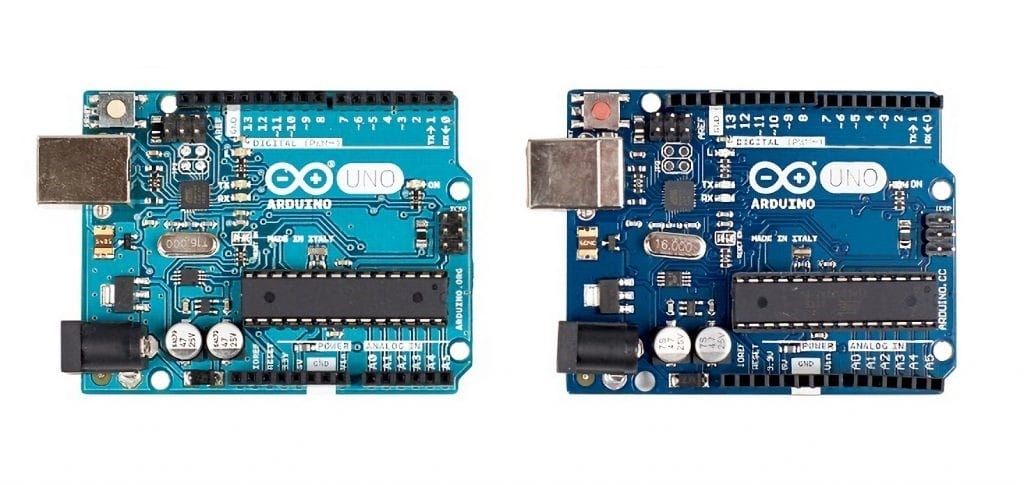
Here are some general differences that are often observed between original Arduino Uno R3 boards and their Chinese copies:
- Build Quality: Original Arduino boards are typically manufactured to higher quality standards. The components used, soldering quality, and overall build may be superior to some Chinese copies.
- Component Quality: Original Arduino boards often use higher-quality components, which can contribute to better performance and durability. Chinese copies may use cheaper components to reduce costs.
- Pricing: Original Arduino boards are generally more expensive than Chinese copies. The lower cost of Chinese copies may make them attractive to budget-conscious users.
- Clones and Variations: Some Chinese copies are exact clones of the original Arduino Uno R3, while others may have slight variations in design or component placement
- Manufacturing Origin: Original Arduino boards are manufactured in Italy or other authorized locations. Chinese copies, as the name suggests, are often manufactured in China.
It's important to note that not all Chinese copies are of poor quality, and some function perfectly well. However, users should be aware of potential differences in quality when choosing between an original Arduino Uno R3 and a Chinese copy.
Considering the price difference in most cases, buying a quality copy of Arduino is a more suitable option for most users.
